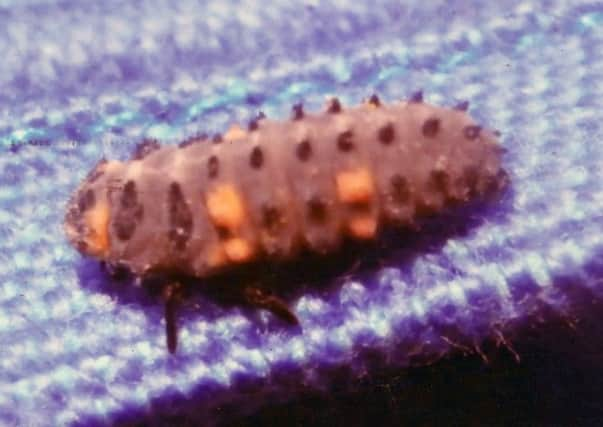Wee monster is one of man’s best friends


It feeds on greenfly and other aphids which suck sap from plants. Anyone who has ever tried to grow broad beans will know about ‘Black Blight’ when myriads of blackfly encrust the growing pods.
My own children when they were small could sometimes be persuaded to squeeze the messy pests between finger and thumb just as they sometimes hunted for cabbage white butterfly caterpillars on the cabbages.
Advertisement
Hide AdAdvertisement
Hide AdLiving out here in the wilds made an open door for every pest under the sun, from slugs and snails to foxes and roe deer. The only garden crop that never failed was flints.
More fun for the kids was to bring home ladybirds in match boxes if they found any of these pretty beetles on their rambles. Sometimes the beetles would pounce on the aphids when released. In winter hundreds of them came into the bedroom through cracks around the windows and would huddle safely together like penguins for the duration. Away they would fly in the spring to do good.
I think they ate currant blister aphids too on the red currant bushes and also woolly aphids on the bark of trees, all of them dangerous pests.
The human race is gradually waking up to the fact that our planet could not feed us without the part that insects play in the ecosystem. They pollinate flowers, recycle dead animals and plants, make food for birds.
Advertisement
Hide AdAdvertisement
Hide AdWe’re daft enough as a species to like only those which look pretty, like ladybirds and butterflies. Most we are unaware of. In my garden and immediate surrounds there live 600 species of flies, 300 different moths, 30 butterflies, 60 different bees and wasps. It makes a grand spectacle in the spring, summer and autumn as each one comes onto the stage for its brief moment of display with wings unfolding ready for its own brief special flypast.
How we enjoy the hovering dance of the green long horn moths as they display over the lilac flowers in May. Wonderful to see the sun king hoverfly with its striped yellow body, the cardinal beetle, and the bee-flies which hover endlessly in the sunshine of May. We enjoy the mining bees that nest in the lawn and all the ichneumon flies and gall wasps that make pincushions and spangles on the roses and oaks.
Our favourite of them all is probably the purple emperor butterfly that lives in the garden with us. Or is it the ladybird?